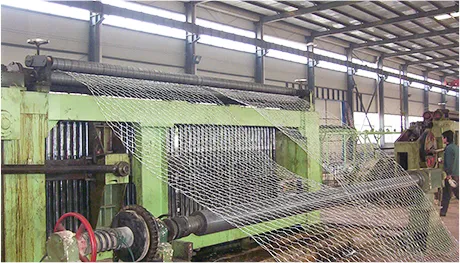-
 Phone:
Phone: -
 Email:
Email:

rockfall net
Understanding Rockfall Nets A Vital Solution for Landslide Management
Rockfalls are rapid occurrences where rocks and debris detach from a slope and cascade downwards, often causing significant hazards to infrastructure, wildlife, and human safety. As urban development increasingly encroaches upon mountainous and unstable terrain, the need for effective mitigation measures has become paramount. Among the various engineering solutions, rockfall nets have emerged as a critical technology in preserving both natural landscapes and human structures.
Rockfall nets are specialized barrier systems designed to catch or deflect falling rocks, effectively acting as a protective shield for areas at risk of landslides. These nets can be constructed from high-tensile steel wire or synthetic fibers, designed to withstand the immense forces generated by falling debris. Their applications range from protecting roads and railways to safeguarding buildings and recreational areas, making them an integral part of landslide management strategies.
The installation of rockfall nets typically involves a comprehensive assessment of the risk area, where geotechnical engineers determine the potential sources of rockfall and the required specifications for the netting system
. Factors such as slope angle, rock size, and climate conditions are crucial in creating an effective design. By anchoring the nets securely to the slope, engineers ensure that the system can absorb kinetic energy, preventing rocks from reaching numerous critical infrastructures below.rockfall net

One of the advantages of rockfall nets is their relatively low environmental impact compared to other protective measures, such as large-scale rock embankments or retaining walls. The nets allow for natural vegetation to remain intact, which can help stabilize the slope and enhance biodiversity while still providing essential protection from rockfalls. This dual benefit of safety and ecological preservation is particularly appealing in sensitive environments.
Moreover, modern rockfall net systems have evolved with technology. Advances in materials science have led to the development of lightweight, durable nets that can be quickly installed and maintained. Additionally, the incorporation of sensors into these systems allows for real-time monitoring, where changes in slope stability can trigger alerts, enabling preventive measures before a rockfall event occurs.
In conclusion, rockfall nets play a crucial role in the management of landslides, providing an effective and environmentally friendly solution to mitigate risks associated with rockfalls. As climate change continues to influence geological stability, the integration of such preventive measures will be essential in safeguarding lives, infrastructure, and ecosystems alike. With continued innovation and investment in this field, communities can bolster their resilience against the natural forces at play in mountainous regions.
-
Wire Mesh for Every Need: A Practical SolutionNewsJul.25,2025
-
Steel Fences: Durable, Secure, and Stylish OptionsNewsJul.25,2025
-
Roll Top Fencing: A Smart Solution for Safety and SecurityNewsJul.25,2025
-
Cattle Farm Fencing Solutions for Maximum SecurityNewsJul.25,2025
-
Affordable Iron Binding Wire SolutionsNewsJul.25,2025
-
Affordable Galvanized Wire SolutionsNewsJul.25,2025
-
Wire Hanger Recycling IdeasNewsJul.25,2025








